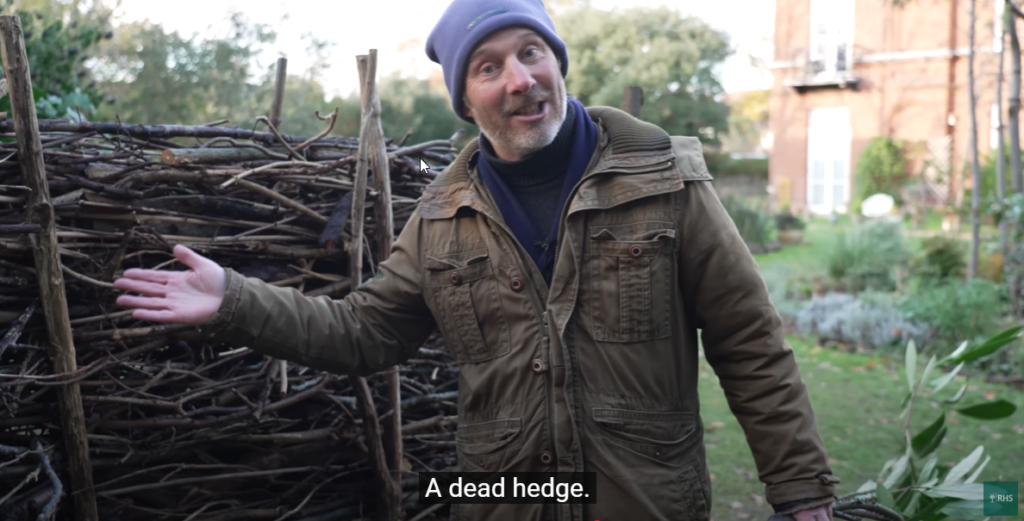The RHS has produced a dear little video that very sweetly promotes hedges over fences on the basis of their usefullness and environmental value.
On a debatably even sweeter premise, I will offer my dear little criticisms in the traditional manner of my people, the backseat driving folk of Somerset:

RHS Horticultural Advisor Nick Turrell seems like a lovely chap, and his video starts off with a nice framing story about needing to hide some bins at the back of his film set garden.
All very believable, and it introduces the point well: fences are tacky and make your bum look big, while hedges are glamourous and make the other girls jealous.
But Nick masterfully injects dramatic tension into this tidy picture: luxurious hedges, for all their supreme elegance, take time to grow, while frumpy fences have the trump card of instant separation gratification. When I really don’t want to look at something, I literally don’t want to see it again.
To help sell the hedge, Nick repeats that old chestnut about hedges reducing road noise, and shares some interesting research about the best hedges for capturing air pollution, which include Yew, Thuja plicata, Elaeagnus (we only stock the decidious species at time of writing), and above all evergreen Cotoneasters with their hairy leaves.
If you thought that was interesting, you will love Evaluating the Effectiveness of Urban Hedges as Air Pollution Barriers by Blanuša et al, which famously found that “only hedge depths in excess of 2m were found to noticeably reduce the concentration of fine particles in species with less capacity for particulates’ capture”, whereas effective species like Cotoneaster achieved useful results in 1.5m wide hedges.
He explains out that hedges are essential for wildlife, which is great if you like spiders, and roots are better than concrete at absorbing water.
By this point, Nick has so sold the advantages of hedges over fences that I’m starting to look out the window and wonder how much a dry stone wall would cost.
But Nick, master storyteller, snatches my attention back from the brink with the big reveal:

While your hedge is reaching the desired size, you block the view of whatever eyesore was bothering you with the lesser eyesore of a wall of dead sticks bound as a “hedge”, but also technically a fence, ideally on the North or East side of the hedge so as not to block the light.
Nick’s resourceful answer to “fence or hedge” is “both, and cheap”.
Dead hedging is a very common practice when hedgelaying out in country. You don’t see it much in the city, but that only makes it trendier.
Building a deadhedge could even make you more popular with the neighbours who pay their gardeners to remove woody green waste, that’s a little van load of debris there.
But a dead hedge “could be prettier”, which is polite for “it looks like a pile of dead sticks in front of some garden bins”.
A dead hedge will never look as lush as a hazel hurdle made from your own copse by old uncle Jack, but ol’Jack don’t hurdle for nowt, those things cost money.
So, there is one proven way to make things prettier: buy more pretty things to put on top of them.
If your dead hedge gets a decent amount of sun, it’s an ideal support for our sweet pea seedlings to scramble over without delay.
